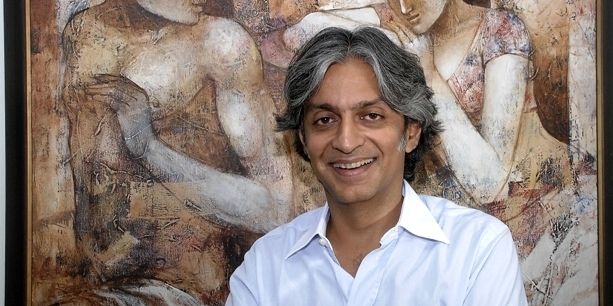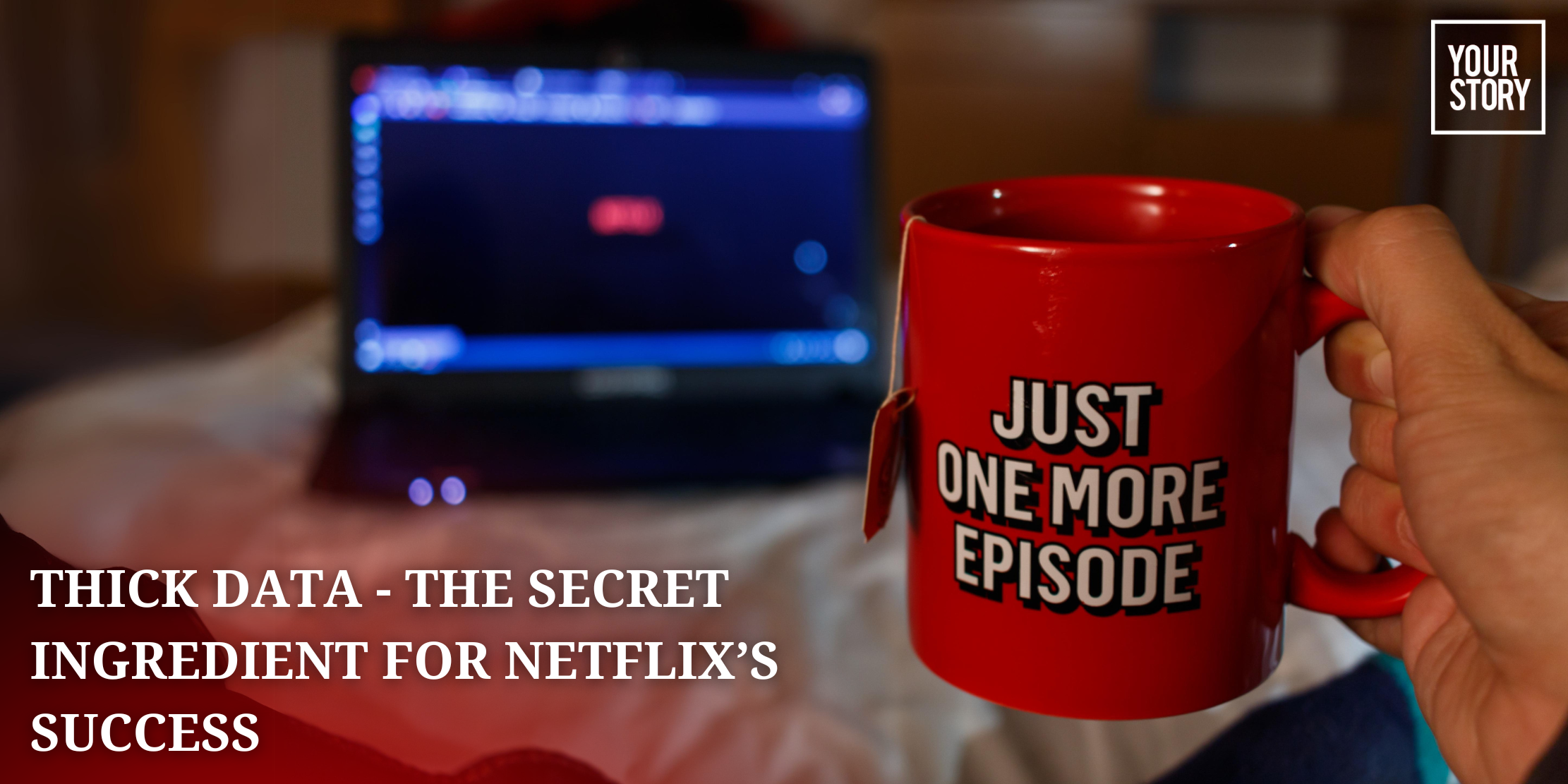“I would rather get the size of market wrong, not the entrepreneur” - Sasha Mirchandani, Kae Capital
Sasha Mirchandani of Kae Capital belongs to the family of entrepreneurs that built the Onida brand, ground up. His family started MIRC Electronics and created the Onida brand -- one of the most aspirational TV brands of the 1980s. Sasha also started his training as an entrepreneur at MIRC Electronics and worked there till 2002. Later, when the company decided to separate ownership and management, Sasha moved out. He started his own BPO business which he ran till 2006 and then joined BlueRun Ventures, where he worked till 2011. Today he is the founder and MD of Kae Capital, a VC firm that makes investments in early- to mid-stage companies.
YourStory caught up with Sasha to talk about his stint as an entrepreneur, and a VC, and his opinion on the Indian entrepreneurial ecosystem. Excerpts.

Starting out
Sasha’s first stint with the venture capital space was when he wanted to sell a business unit that was part of MIRC Electronics. In 1999, during the dotcom era, Sasha started a dotcom company which didn’t work, but soon pivoted the business to make it a data mining company. “The new board of directors came in when I was exiting Onida and they said there is no synergy between computer electronics and data mining. So they told me to get rid of the business, that is when I went to a few VCs and asked them if they would be interested. That was the first time I heard about VCs, I didn’t have a clue about this class,” recollects Sasha. The data mining company was his first investment, where he admits to have made many mistakes; and, though there have been up and downs over the years, the company is now doing really well. “I learnt the true entrepreneurial spirit to stick it out from there. Patience and perseverance which is needed as an entrepreneur, I learnt here,” says Sasha. The company is called Fractal Analytics -- it is still functional and recently raised $25 million.
The founding of Mumbai Angels is an equally interesting story. When Sasha was running his BPO firm, one evening while having coffee with his buddy Prashant Choksey (who eventually became the co-founder of Mumbai Angels), they decided to join an angel club. But to their surprise, there were none in India they could be part of. “We thought we will do it ourselves, if nobody else has done it. So far, we have done close to 60 deals and 20 million has been invested in the ecosystem, with 10 exits so far,” says Sasha proudly.
After tasting success with Mumbai Angels, Prashant and Sasha decided to do start their own VC fund and that was the origin of Kae Capital.
On Kae Capital
Kae Capital has investments from three LPs – Axim, Quadron Investments, and Morgan Creek. They also have a large number of HNIs who are invested in the fund. Kae Capital is sector-agnostic and has made investments across the board. “The most important things we look for in a venture are the founder, and a large market opportunity. We have other parameters surely, but if these two are ticked out then we would surely look at the business,” says Sasha. Early-stage technology companies, eCommerce and mobile have been their usual playing area. As a small fund, capital efficiency is very important to Kae Capital, and therefore sectors which cannot fit those criteria are automatically ticked out. For example, sectors like infrastructure, energy, power and other capital-intensive ones automatically fall out of their ambit.
“We like to stay invested for long with all Kae Capital investments, we would like to hold on for as long as we can. If we bet on a winning company we would like to wait for an IPO which would take a long time. We have a very patient outlook and stay for 8+2 years, like any other VC fund,” says Sasha. He quotes Just Dial and redBus as two example of exits that have been ideal. “An IPO or an M&A exit is the best one, but in India we also see a lot of exits happening to other VCs. If the economy grows faster, the time to exit will come down, but realistically it will be between 7 and 10 years,” says Sasha.
While most investments of Kae Capital have been in ventures which have a large market opportunity, they have also made some purely based on the idea or innovation. CloudByte, says Sasha is one such investment. InMobi was another idea which was ahead of its time. “When InMobi decided to do mobile search, it was ahead of its time. But the entrepreneur was quick and after pivoting a couple of times, they got it right. I would rather get the size of market wrong, but not the entrepreneur, because a smart entrepreneur will always figure it out,” says Sasha.
Kae Capital is a $25 million fund and invests anywhere between $50,000 and $500,000 in the seed round. If the company reaches Series A, they can invest up to a million dollars; and in Series B they will invest another million. Thus, the maximum investment Kae Capital can make is up to $2.5 million in a venture.
This year, Kae Capital has plans to pick one sector per analyst and deep dive into it. “It can be anything --mobile, big data, econnect, gaming etc. This exercise will help us understand and filter out investments and entrepreneurs that we don’t want to partner with,” reasons Sasha.
Entrepreneurship in India
Sasha says when he started out, there were no role models. But now there are many people who have made it big. “So, people think, if s/he can do it, so can I,” says Sasha. There is far more money available, even two years back the angel seed ecosystem was completely barren. But today there are more angel clubs, more HNIs, money coming from abroad, more VCs are willing to put small cheques. “So now if you want that Rs 300,000 you have so many options, which is good for the entrepreneur -- they can choose anyone they want,” says Sasha.
He also encourages entrepreneurs to go shopping and find the right investor partner to work with. “Everybody has the right to go shopping, just like an investor does reference checks on the entrepreneur, they should also do a reference check on us. The entrepreneurs owes us nothing, so there is no problem in the entrepreneur choosing the best fund or partner, it's only fair. After giving a term sheet, it’s a different thing, but pre term sheet, it is fine,” says Sasha.

On the free money available in the Indian entrepreneurship ecosystem, Sasha says it is a double-edged sword. “More money also means that companies who should not be funded would be funded, which is not good for the ecosystem. They will die before Series A funding, as Series A VCs would have a higher bar, and that is going to be a challenge,” he says. There could arise a situation where a whole lot of companies will think they are ready for Series A, whereas they are not. “There is a whole Series A gap, because VCs want to see more. They will not write cheques. So in case of companies that have received small seed, there is undercapitalization and it becomes a problem when they run out of cash. Seed investors don’t want to put more money in the company. Series A doesn’t happen and many companies will die and have died,” says Sasha about the drawbacks of free money.
He predicts an explosion of business plans on businesses based on the mobile side in the next three years. “It's already starting to happen. Look at rural India for example; they are shopping a lot on ecommerce. Look at Facebook, its first growth came from the developed world and now it has a single point agenda of moving FB from an internet company to a mobile company,” illustrates Sasha.
And finally, on Sasha’s wishlist of demands from the government to encourage entrepreneurship in India, tax holidays and subsidies are on top.











